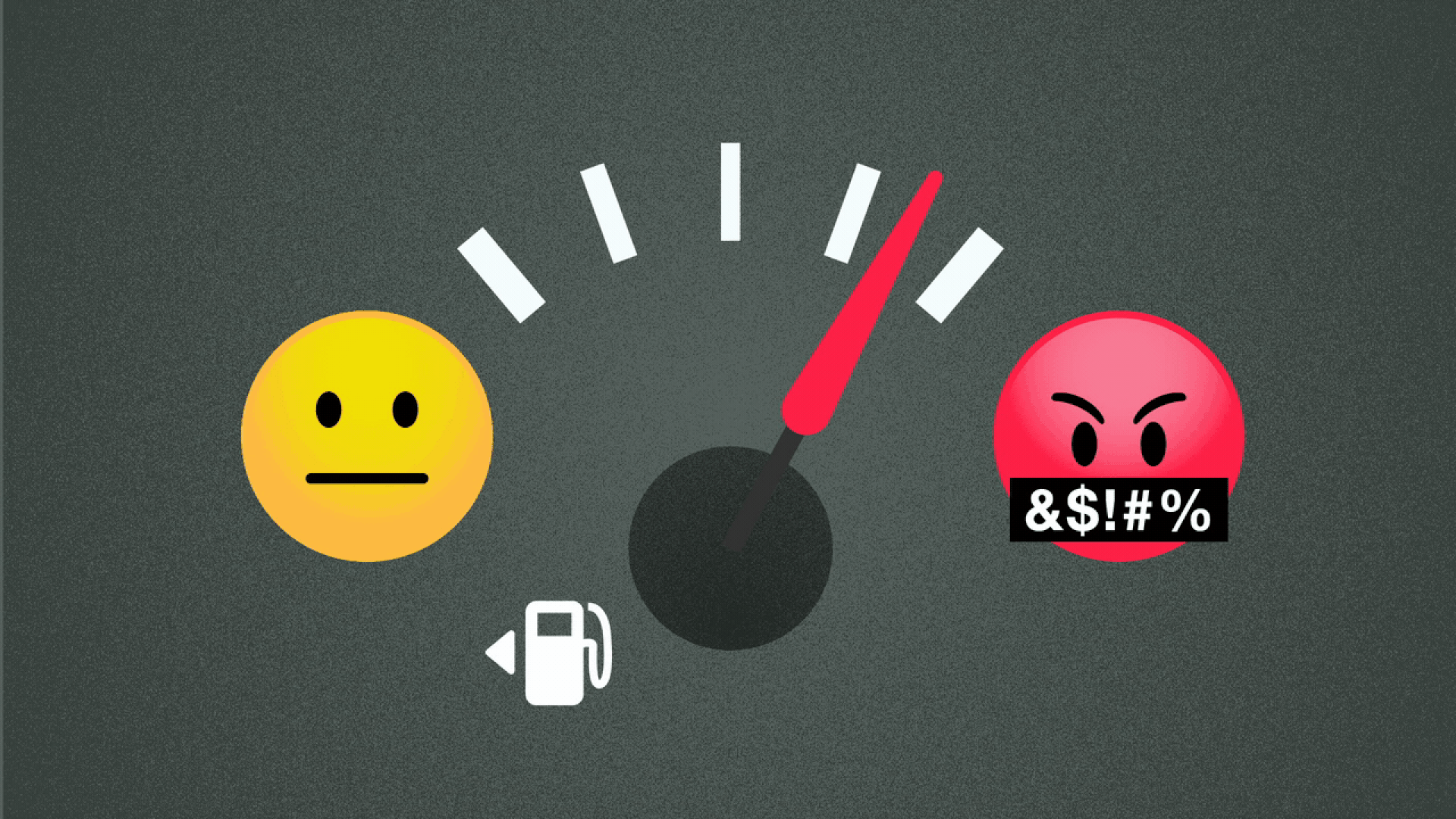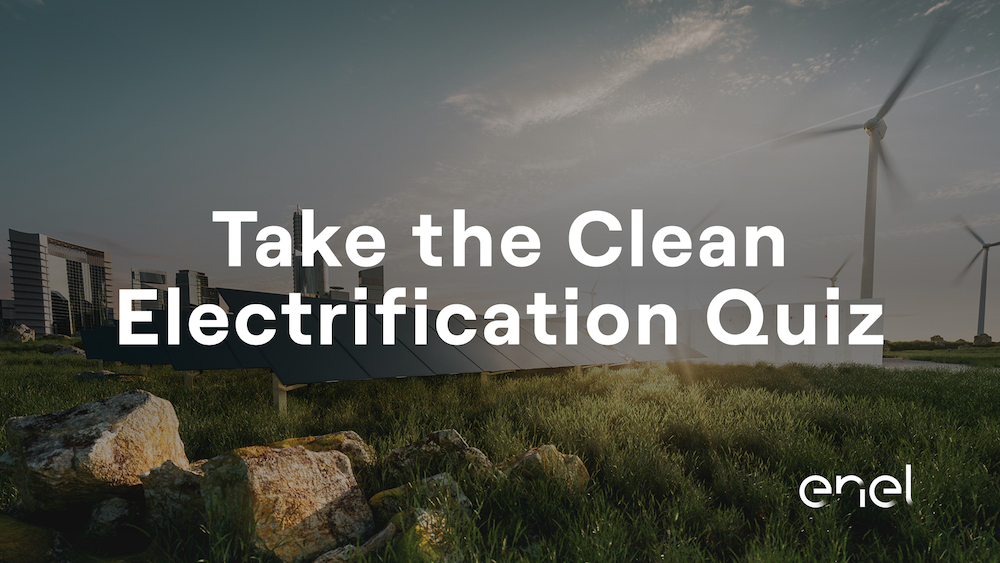| |
| |
| |
| Presented By ENEL NORTH AMERICA |
| |
| Axios Generate |
| By Ben Geman and Andrew Freedman · Apr 11, 2022 |
| 👋 Welcome back, readers! Today's Smart Brevity count is 1,064 words, 4 minutes. 🛢 Oil prices are down over $4 per barrel this morning, sending Brent crude well below $100 amid China's COVID outbreak and restrictions. Go deeper. 🎧 Listen now: The new episode of "How It Happened: Putin's Invasion" explores why tactics meant to pile pressure on Vladimir Putin instead seem to be rallying Russians behind him. |
| |
| |
| 1 big thing: Here come the EVs |
 A pair of new analyses show how electric cars are becoming increasingly mainstream, with a lot more on the way, Ben writes. Driving the news: The research firm BloombergNEF estimates that the number of plug-in vehicles on the world's roads will top 20 million in June. - "That's remarkable growth from only 1 million EVs on roads in 2016," writes Colin McKerracher, a top BloombergNEF transport analyst.
- He sees the number reaching over 26 million by the end of the year.
Why it matters: "The speed of growth is much faster than many incumbents in the automotive and oil industries were expecting just a few years ago," McKerracher writes. The intrigue: While China and Europe are the biggest markets, a separate report by the consultancy ERM notes the growing availability of models in the U.S. - The number of fully electric and plug-in hybrid vehicles for sale under $100,000 will be well above 100 by mid-decade, per the analysis prepared for the Environmental Defense Fund.
- That includes a growing number of SUVs and pickups, the vehicle types at the heart of the U.S. market, as you can see above.
The big picture: "Carmakers worldwide will spend more than $515 billion through 2030 developing new electrified passenger vehicle models," ERM finds. What we're watching: While the report notes several drivers of sales growth, it comes as President Biden's push for a major expansion of consumer incentives remains stuck on Capitol Hill. - It also points out that while global EV sales kept growing during the pandemic, the supply chain woes are still having an effect.
- "Projected long-term effects of the COVID-19 pandemic on vehicle sales — both ICE and EV — remain unclear."
Go deeper: The report provides an in-depth look at specific manufacturer plans, policy drivers and a lot more. Check it out. |
    |
| |
| |
| 2. Europe grapples with energy response to Putin |
 |
|
| Illustration: Brendan Lynch/Axios |
| |
| Russia's war on Ukraine is spurring fresh interest in speeding Europe's clean energy transition, but there's far less agreement on how aggressively to target Russian oil and gas exports, Ben writes. Driving the news: A pair of reports highlight the first point as European Commission leaders prepare to unveil specific plans next month to end reliance on Russian fossil fuels by 2027. - Per Reuters, the top EC climate official said yesterday that the effort may include making existing renewables targets more aggressive. Current plans call for renewables to comprise 40% of the bloc's energy mix by 2030.
- And Bloomberg reports that "Europe's push to wean itself off Russian natural gas is sparking billions of dollars in new commitments toward building a market for low-carbon hydrogen."
What's next: Officials have an uncertain appetite for directly sanctioning oil and natural gas after committing to a coal ban last week. The coming days should bring more signals. "European Union officials in Brussels are seeking to make oil the focus of the bloc's next set of economic measures against Russia over its invasion of Ukraine," the Wall Street Journal reports. Yes, but: The piece cautions that debate "isn't likely to be resolved soon" amid disagreements among various nations. - "EU member states are at loggerheads over demands for an immediate blockade on Russian oil imports," the FT reports.
- The WSJ and Reuters specifically note resistance by Germany — Europe's largest economy — to very near-term steps.
|
    |
| |
| |
| 3. California's deepening drought |
 Reproduced from NOAA; Chart: Axios Visuals California is entering the dry season with its water resources in a precarious position, Andrew writes. Why it matters: Water and wildfire woes lie ahead for the nation's most populous state, as spring runoff into reservoirs slows to a trickle, and forests dry out unusually early in the year. Context: While some rain and snow is likely during the next two weeks, it will be insufficient to pull the Golden State out of its deep rut — which itself is occurring during a longer-term, climate-change-related "megadrought." Threat level: The state's most recent snow survey, conducted April 1, found the snow depth at Phillips Station, near Lake Tahoe, was a meager 2.5 inches, with a water equivalent of one inch. - This was 4% of the average for the date that typically marks the snowpack's seasonal peak. Instead, statewide the snowpack was just 38% of average.
How it works: California relies on its mountain snow to provide about 30% of its water supplies. - The third-straight year of exceptionally below-average snowfall means that there is a greater likelihood of water restrictions.
- "Water conservation will remain our best tool in the face of this ongoing drought and the statewide impacts of a warming climate," stated Karla Nemeth, director of the California Department of Water Resources, in a statement.
- Wildfires in California and other western states have been getting more frequent and severe as the climate has grown hotter and drier overall. In California, only two of the top 20 largest wildfires in state history occurred prior to the year 2000.
Read more. |
    |
| |
| |
| A message from ENEL NORTH AMERICA |
| Prepare for the electrified economy |
| |
 |
| |
| Electrifying the economy is the fastest way to drive down carbon emissions. The takeaway: - Technologies will run on electricity, replacing those reliant on fossil fuels.
- Businesses that plan now will benefit the most from the new energy economy.
Are you ready for the electrified economy? |
| |
| |
| 4. Voters spread blame for gas prices |
 |
|
| Illustration: Brendan Lynch/Axios |
| |
| Gasoline prices are a big public concern, and President Biden can't escape blame even though oil companies face even more, two new polls show, Ben writes. Why it matters: Energy costs also drive wider inflation. It's a political threat to Democrats who face the loss of one or both chambers of Congress in November's midterm elections. Driving the news: A CBS News/YouGov poll shows 62% believe Biden is contributing a lot or some to gas prices, and 65% say he could be doing more to lower them. - However, in the poll released yesterday, 78% blame oil companies for charging more and 70% cite Russia's war against Ukraine.
- A separate ABC News/Ipsos poll shows that 71% of adults blame Vladimir Putin a great deal or good amount for recent price increases, with oil companies at 68%.
- Democratic policies and President Biden are both slightly over 50% on the same question.
Threat level: 50% say the recent gas price increase is causing financial hardship, with one in five calling it "serious," the ABC poll finds. |
    |
| |
| |
| 5. Quote of the day |
| "Ultimately, we don't know exactly what a net-zero emissions energy system will look like, but we know enough to keep us busy for at least a decade: We need to deploy mature technologies (renewables, storage, electric vehicles, efficient equipment like heat pumps) and invest in technologies that may be needed down the road." — New York Times opinion piece by several clean energy experts Why it matters: The op-ed is a plea to move past fights in climate circles over how much carbon removal methods like direct air capture will eventually be needed. |
    |
| |
| |
| A message from ENEL NORTH AMERICA |
| Get ready for the clean electrified economy |
| |
 |
| |
| As we decarbonize our power sector, electricity will be a clean, affordable, reliable energy source. Companies must move first and fast toward electrifying their operations. Are you ready for the electrified economy? Take the Clean Electrification Quiz to find out. |
| |
| Thanks for reading! See you back here tomorrow. |
 | It's called Smart Brevity®. Over 200 orgs use it — in a tool called Axios HQ — to drive productivity with clearer workplace communications. | | |
No comments:
Post a Comment